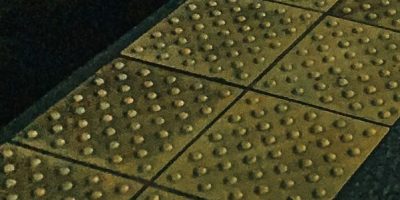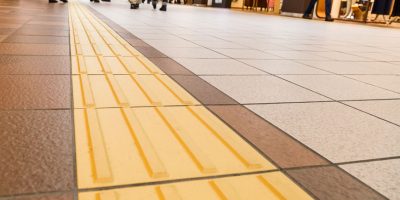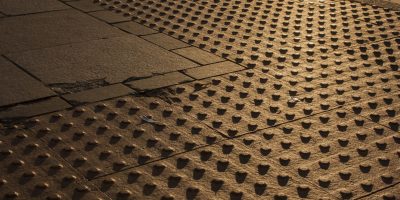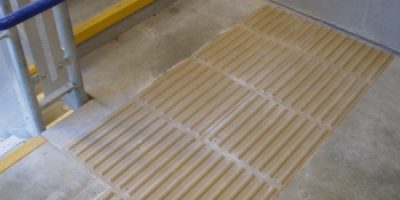In 2021, the International Agency for the Prevention of Blindness’s Vision Atlas ran a report to compile data regarding those living with visual impairment. They found that roughly 43 million people currently live with total blindness and another 295 million experience moderate to severe visual impairment. Although there are ways that we can take care of our bodies and visual health to prevent losing our sight, many are born without the ability to see. With construction, there are many ways that our job sites maintain the safety of the public. We place barricades, caution tape, and other physical barriers to prevent those that are both able to see and not to remain safe. However, on many work sites, we are also implementing features that will continue to help those with visual impairments long after we’re gone.
In 1965, Japanese Inventor, Seiichi Miyake, was attempting to find a way that would help his blind friend with navigating the city railway system. He understood that braille was the universal way for visually impaired people to read and understand the world around them. However, braille is not a language, but a code system for the language being used. This means that braille isn’t just one alphabet – there’s English braille, Arabic braille, Japanese braille, etc. Due to this worldwide difference, Miyake designed his tactile, called the Tenji Block, in a way that can be uniform across the world. Tenji is Japanese for braille, but has since been changed to different wordings depending on the region. He started developing his idea further and in 1965, his idea for tactile paving was implemented for testing at the street crossing in front of the Okayama School for the Blind in 1967. As they grew in popularity, Japan mandated its usage for its National Railway 10 years later, and in 2001 were standard for all sidewalks and walkways throughout the country.
This life saving idea slowly began creeping across the world, and aiding millions of those with visual impairment. In 1990, the Americans with Disabilities Act was set in place and required tactile warning systems where needed and have been mandatory on train platforms since 1991. The tactile blocks also made an appearance at the 2000 Sydney Olympics, especially in the stadiums. All over the world, these blocks can be found on road crossings, stairs, elevators, parks, and other places where foot traffic is permitted. There’s also many different terms the design goes by, as well as the style of the bump on the pavings.
Tenji Blocks
Truncated Domes
Detectable Warnings or Detectable Warning Surfaces
Tactile Tiles
Tactile Ground Surface Indicators
Tactile Walking Surface Indicators
Blister Tactile
Blister tactile are humps that are in alignment with each other. These are used for crosswalks and interactions of streets. They report that one must stop as there is a hazard ahead such as a street intersection or a grade change of the ground.
Offset Blister Tactile

Similar to the blister tactile, the humps are the same but the rows are offset by 66.5mm. These blocks are also used for hazard warnings, but are specifically train platforms. They alert that there is a drop off approaching and to stop.
Lozenge Tactile

Lozenge tactiles are used for Light Rail Transportation (LRT). LRT trams are flush with the ground so there is no significant drop off, but a dangerous situation if someone were to walk onto the tracks.
Directional Block Tactile

Directional tactiles are long vertical strips that help guide the visually impaired down a path that is free of any obstructions and obstacles.
Corduroy Hazard Tactile
Corduroy tactiles are long horizontal strips that warn of an upcoming hazard that you don’t need to stop for, but be aware of. This is most often seen before stairs, elevators, and also approaching LRT platforms.
Typically, tactile blocks will be brightly colored so those with partial impairments can recognize the contrast to surroundings, however this is becoming an issue. Cities are beginning to stamp the bumps into the concrete or make them colors such as grays or dull red which can have negative impact on some. Without being able to notice the color difference, people could ignore the hazard completely as they’re not expecting it. However, these issues are slowly being brought to the attention of those in power, and have been making a difference in changing back to the original colors of yellow and red. Next time you’re walking through your town, approaching stairs, or crossing a street, take a second to look down and appreciate not only your sight, but that our world has adapted ways to aid those who can’t. If you enjoyed this blog, please leave a comment below or share it with your friends and family via the icons!
Share this Post




